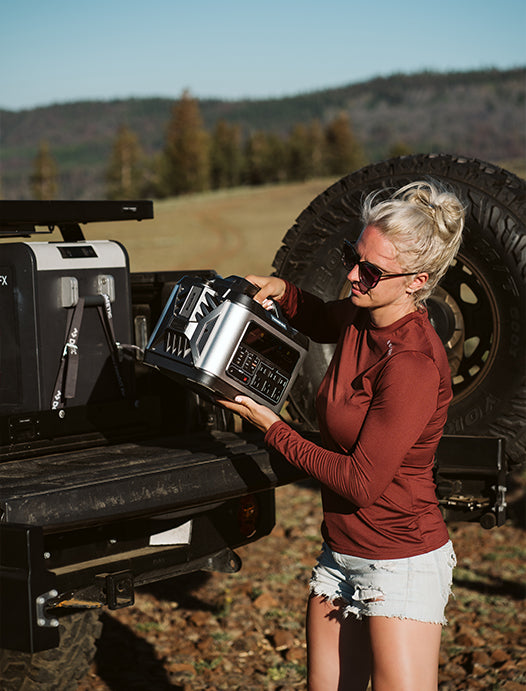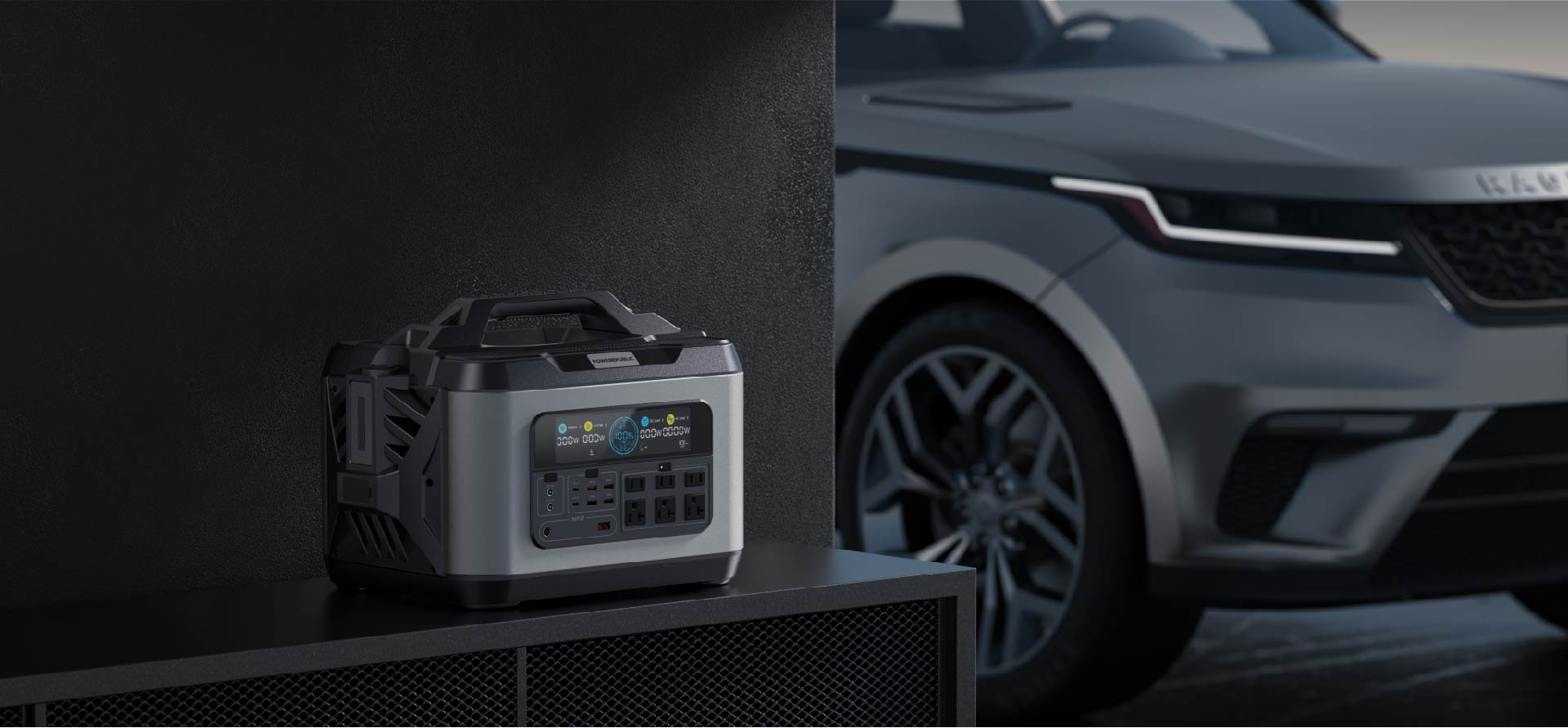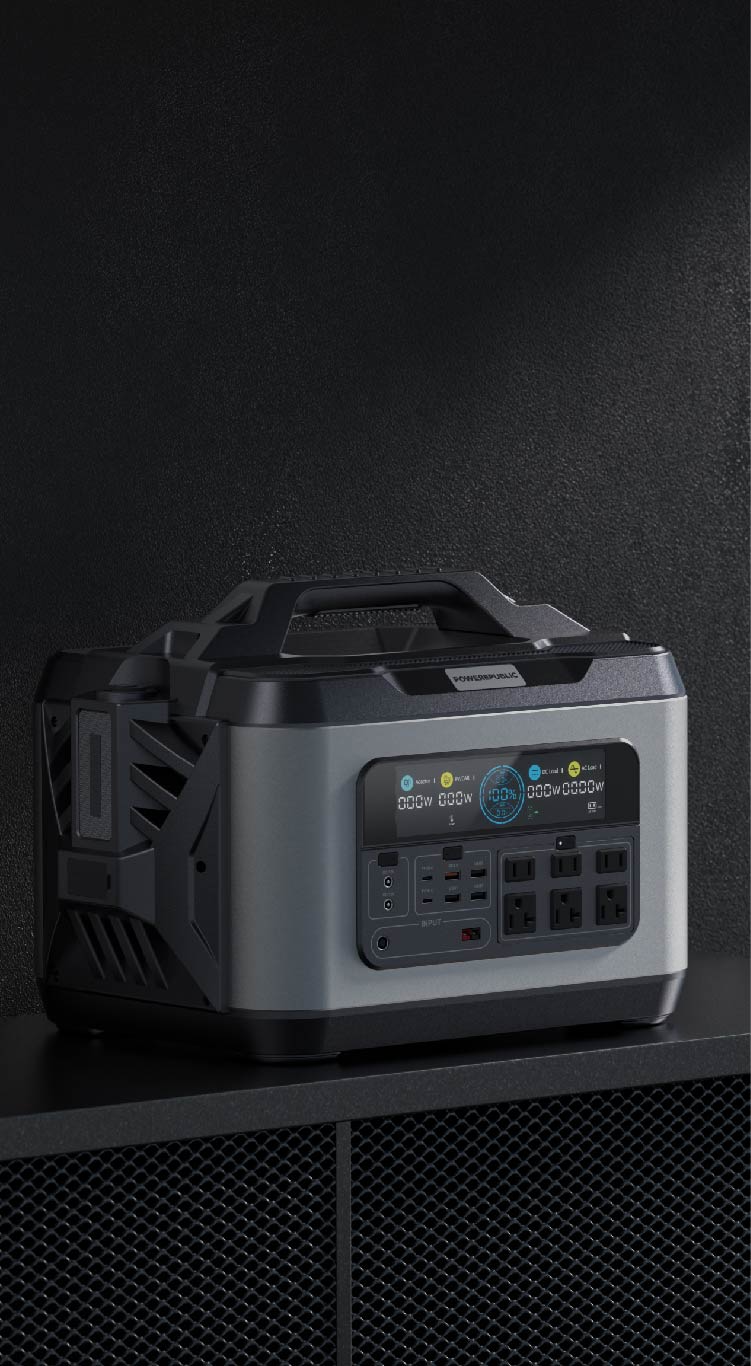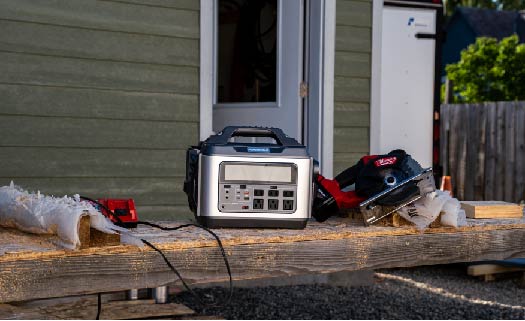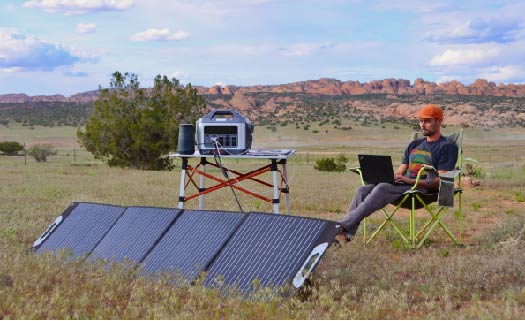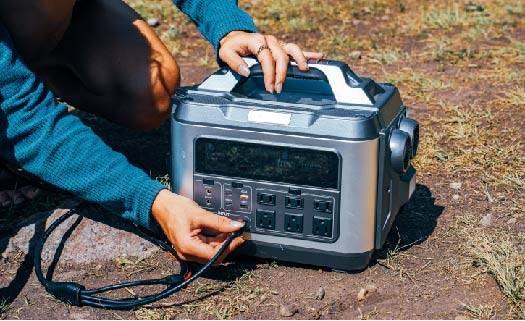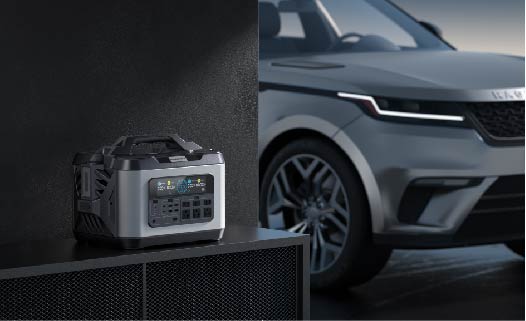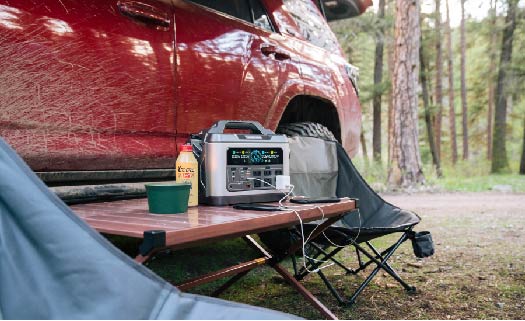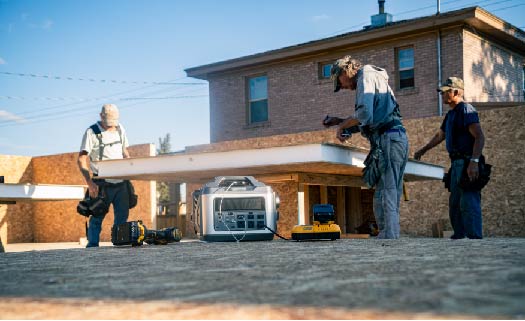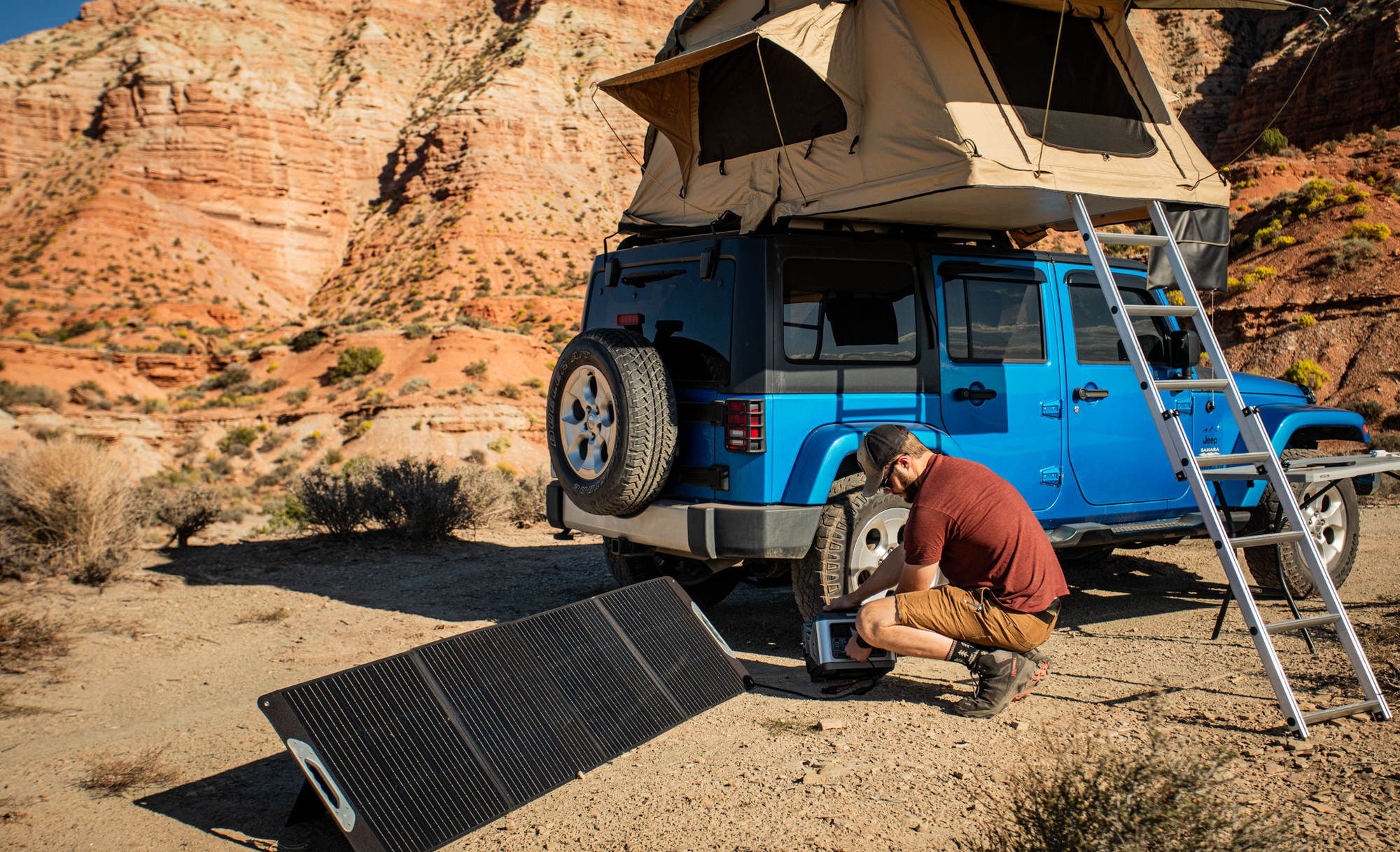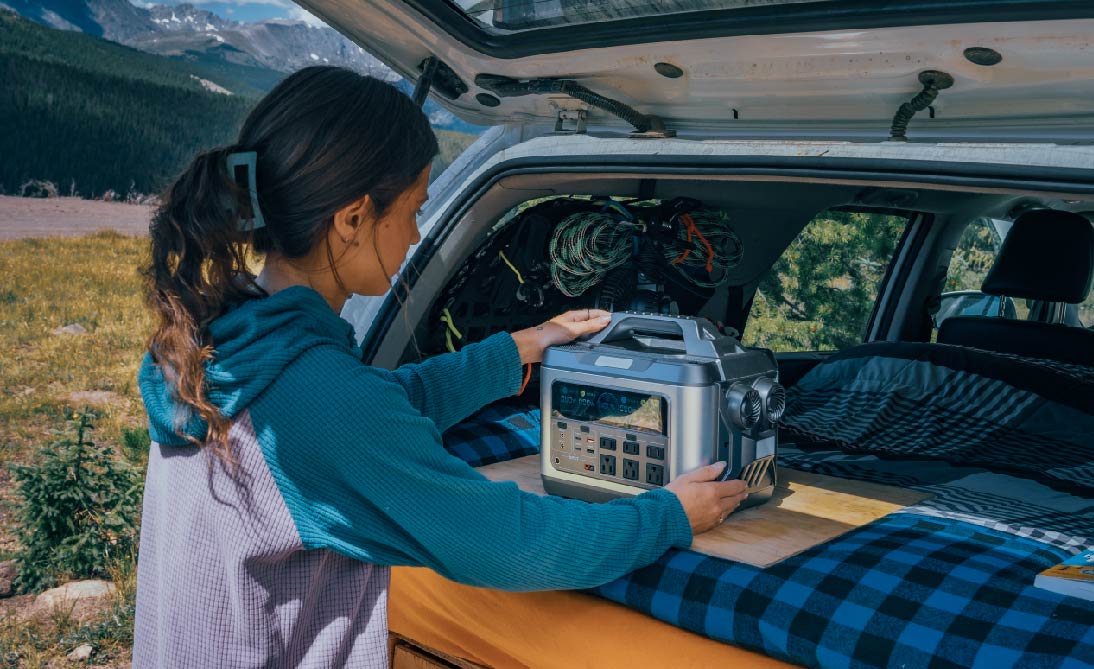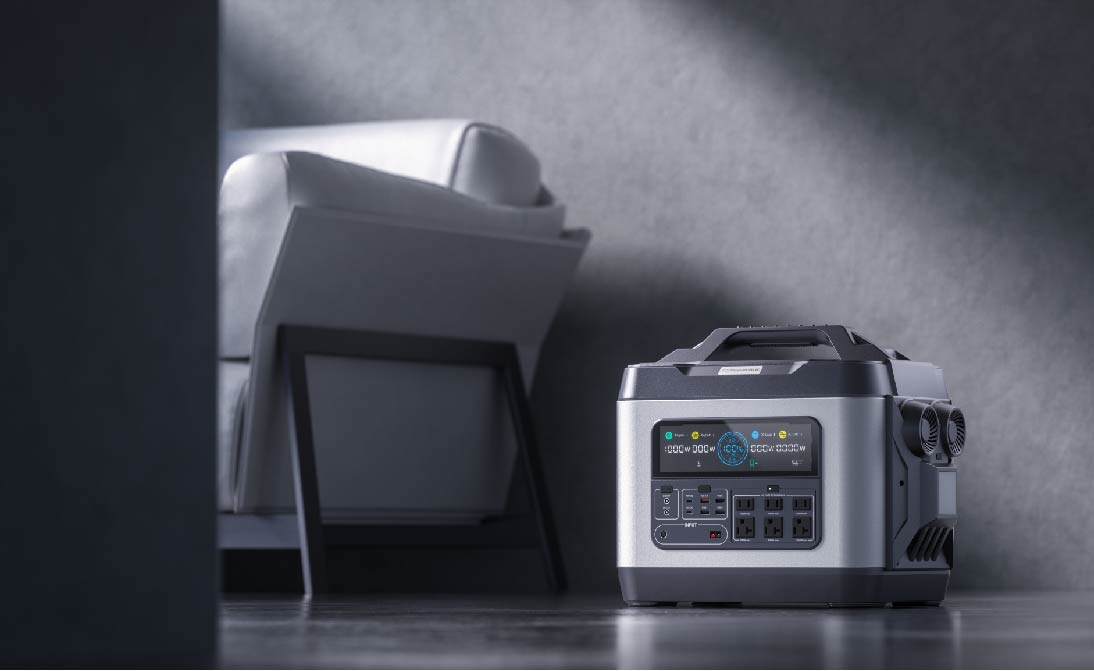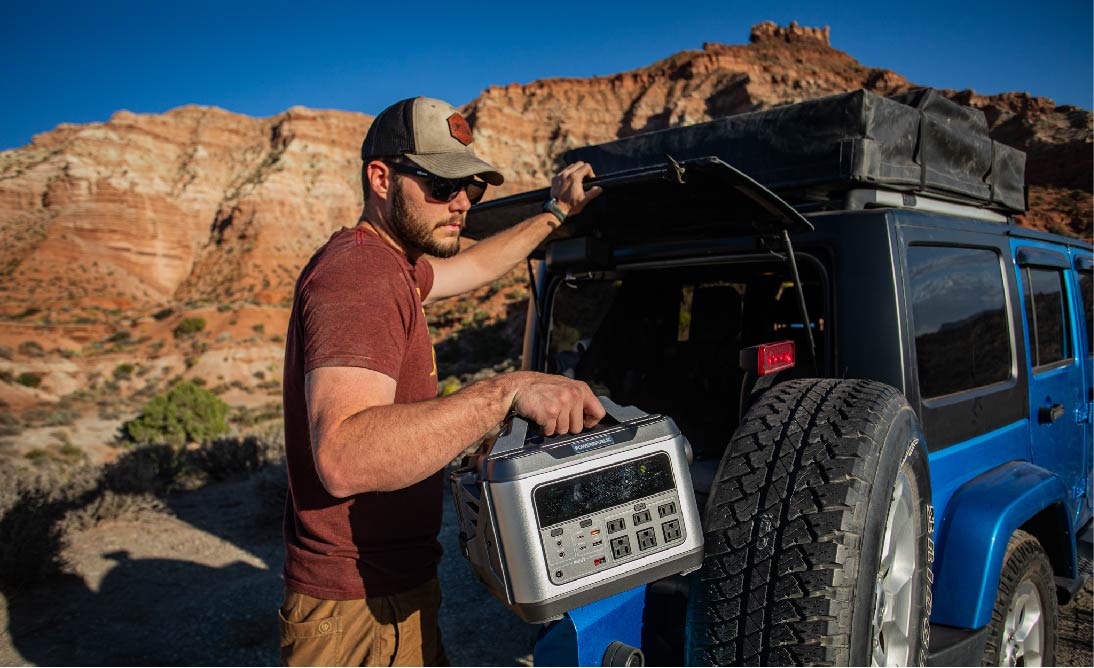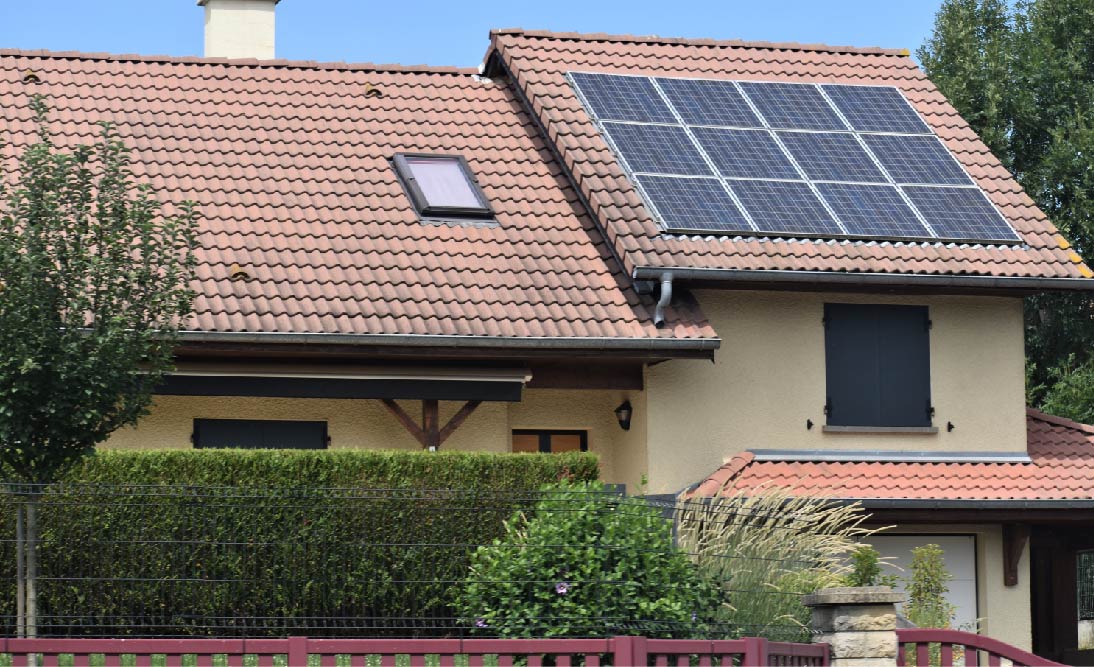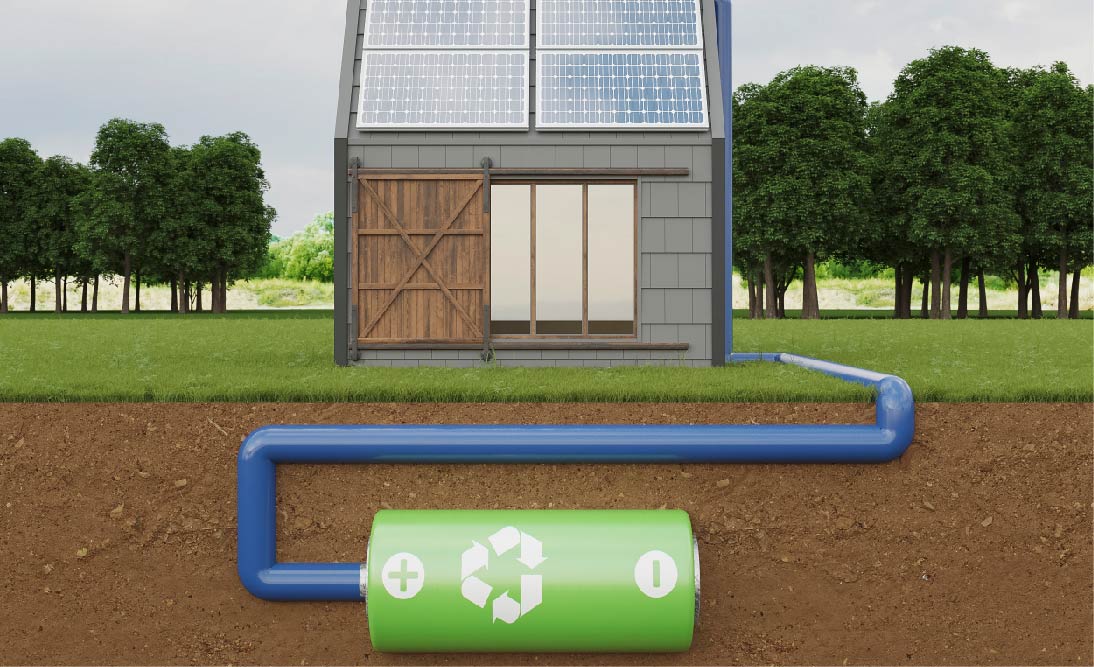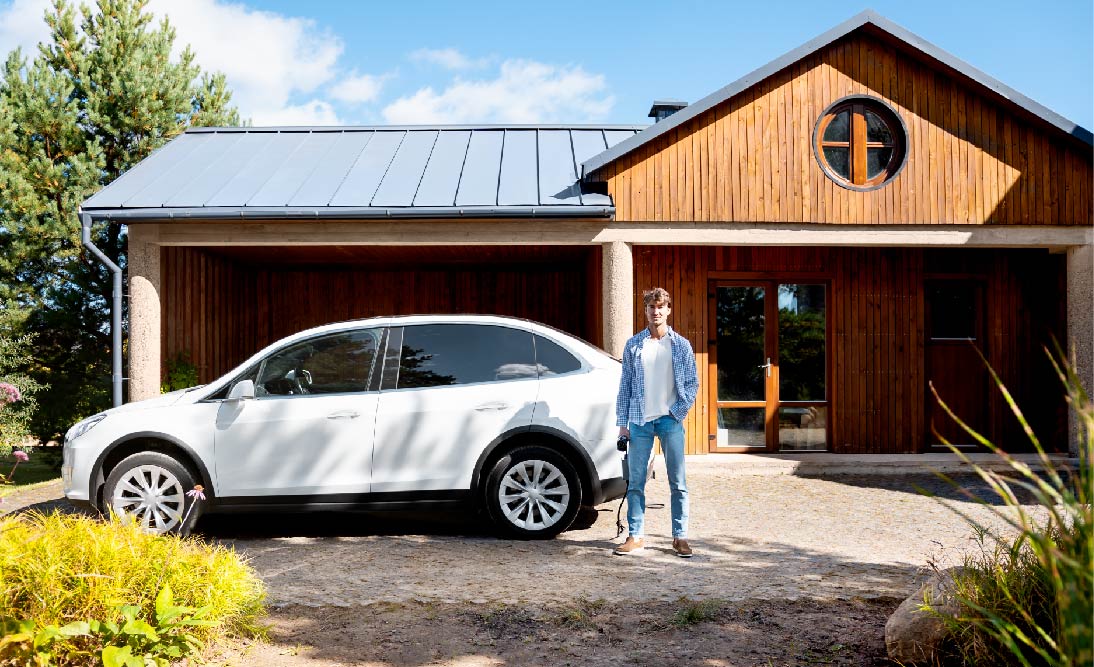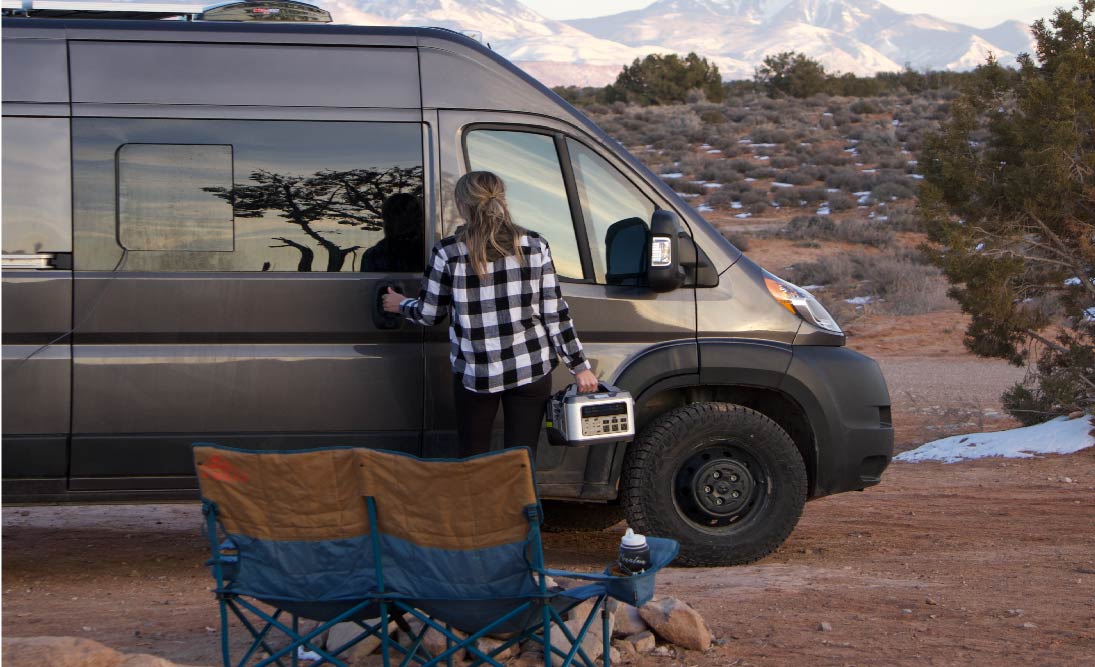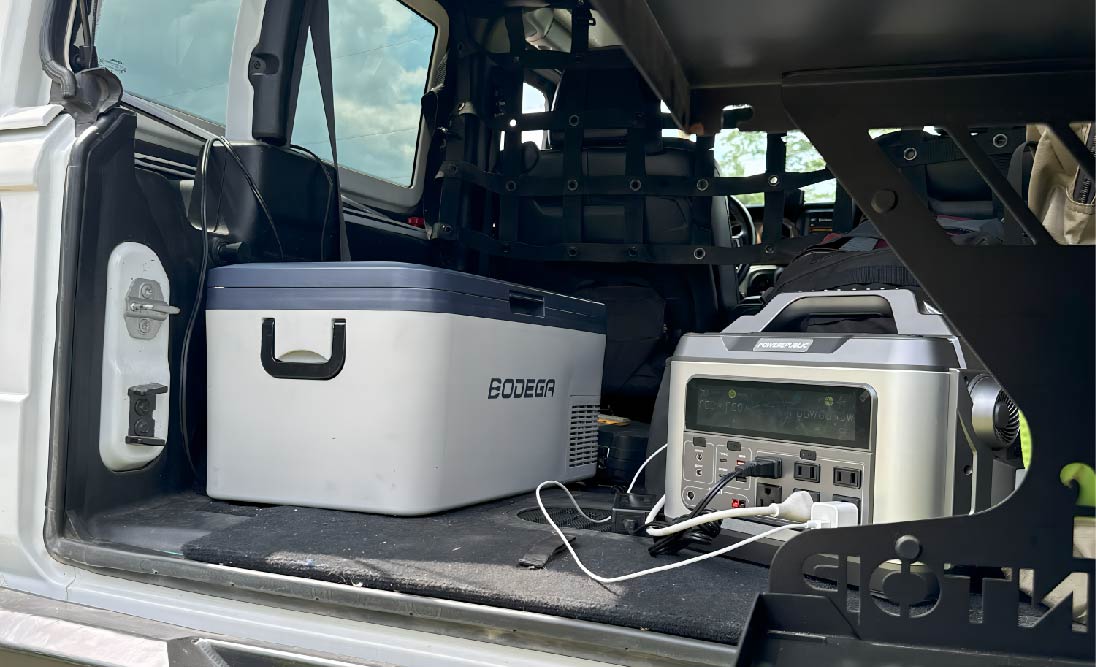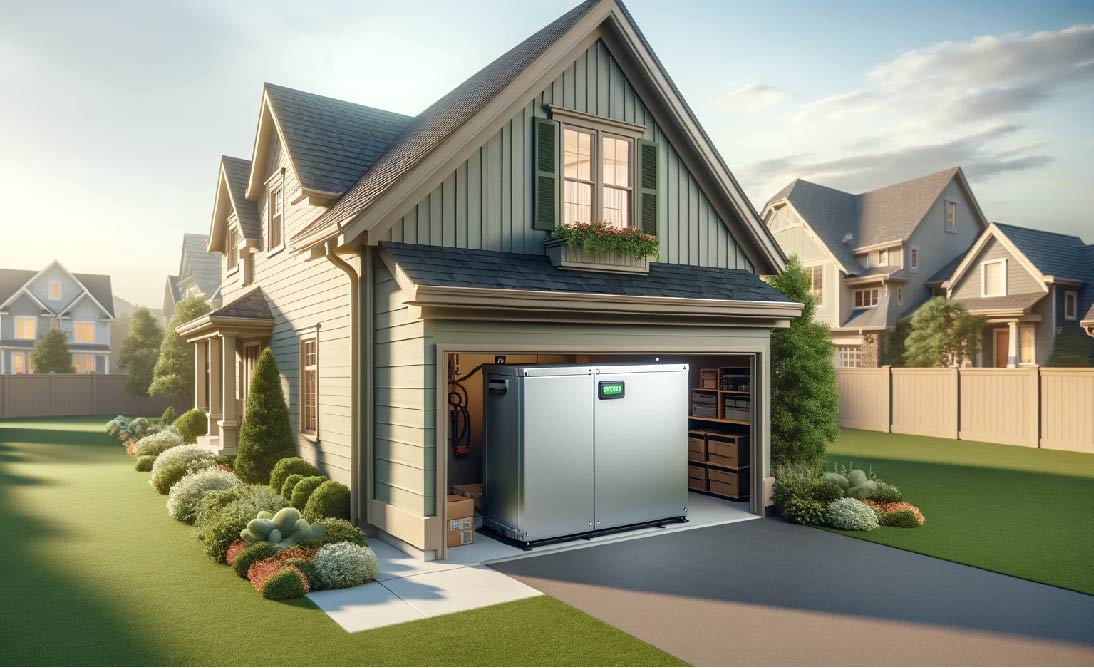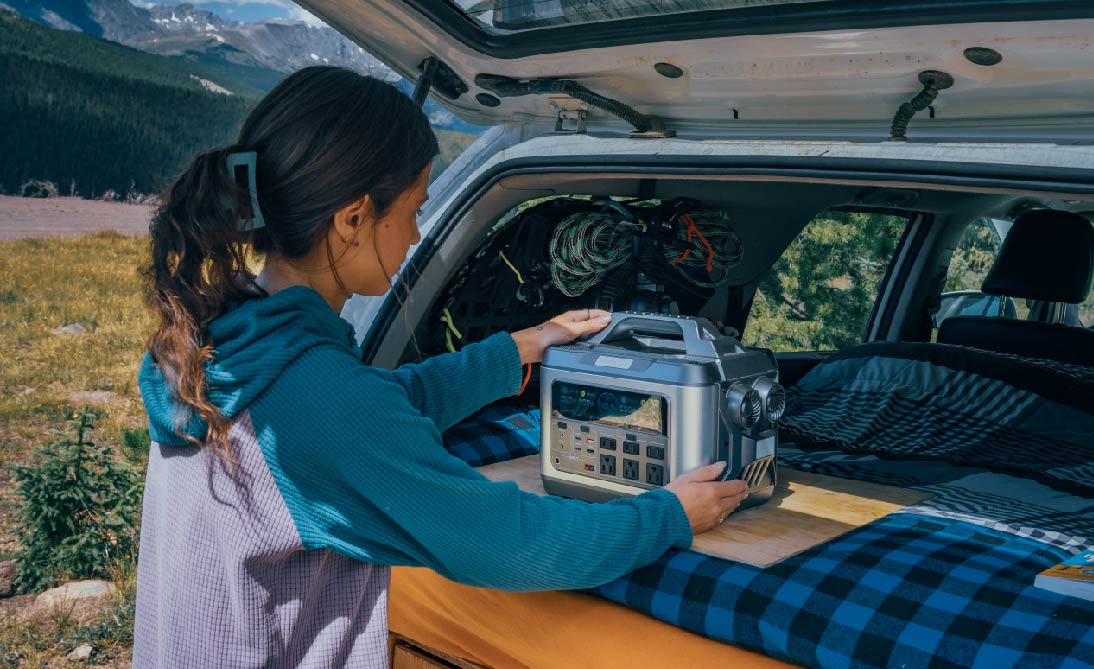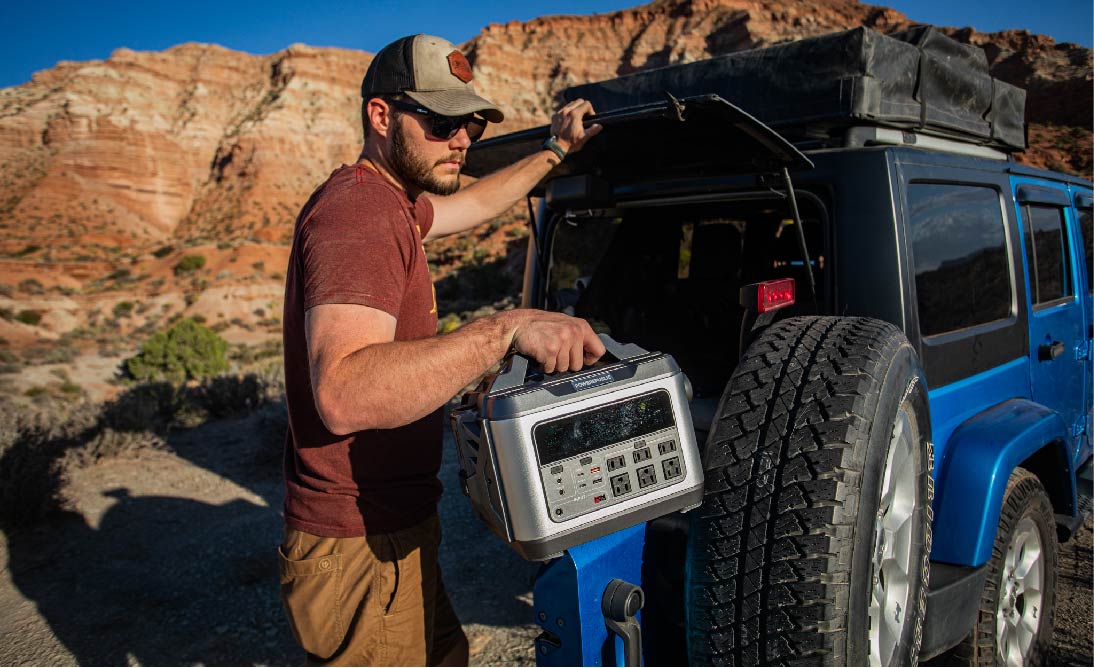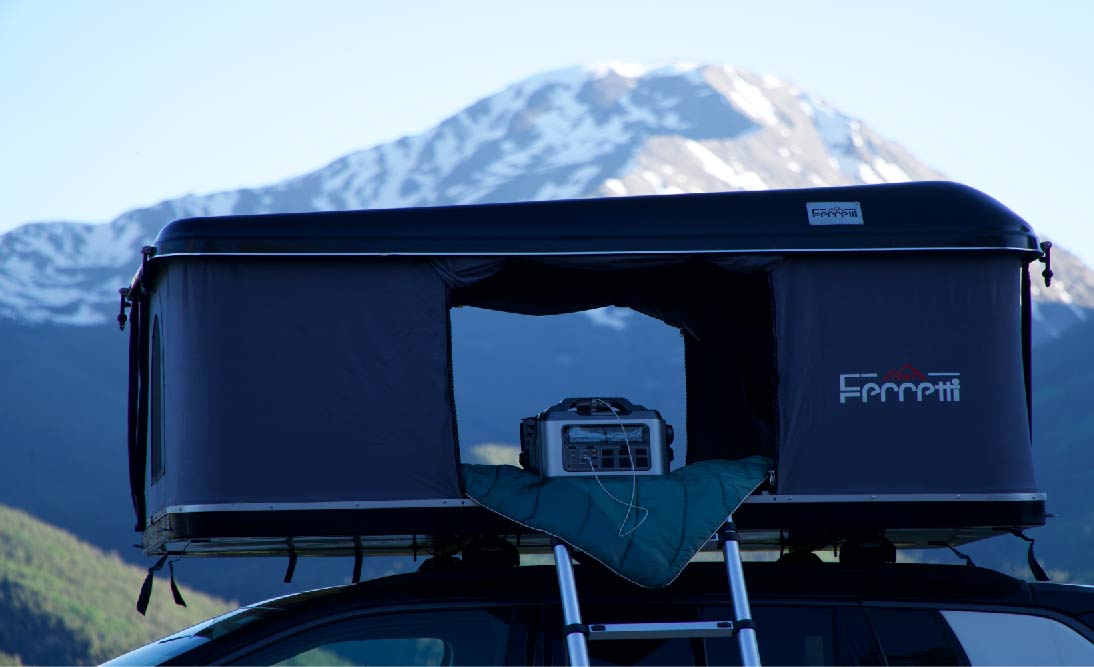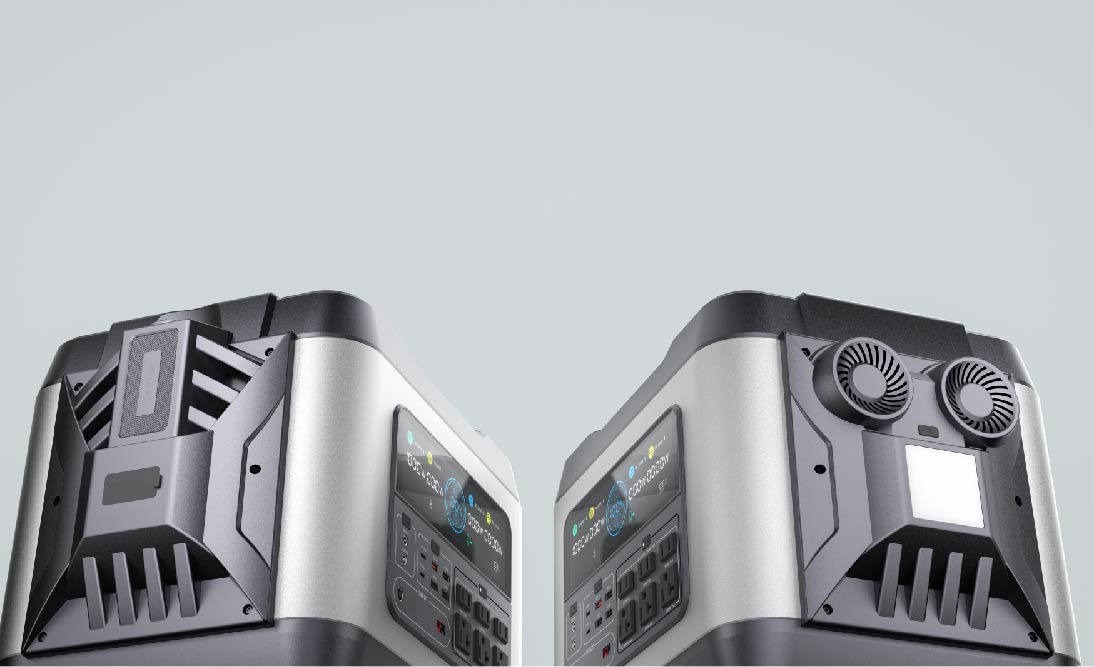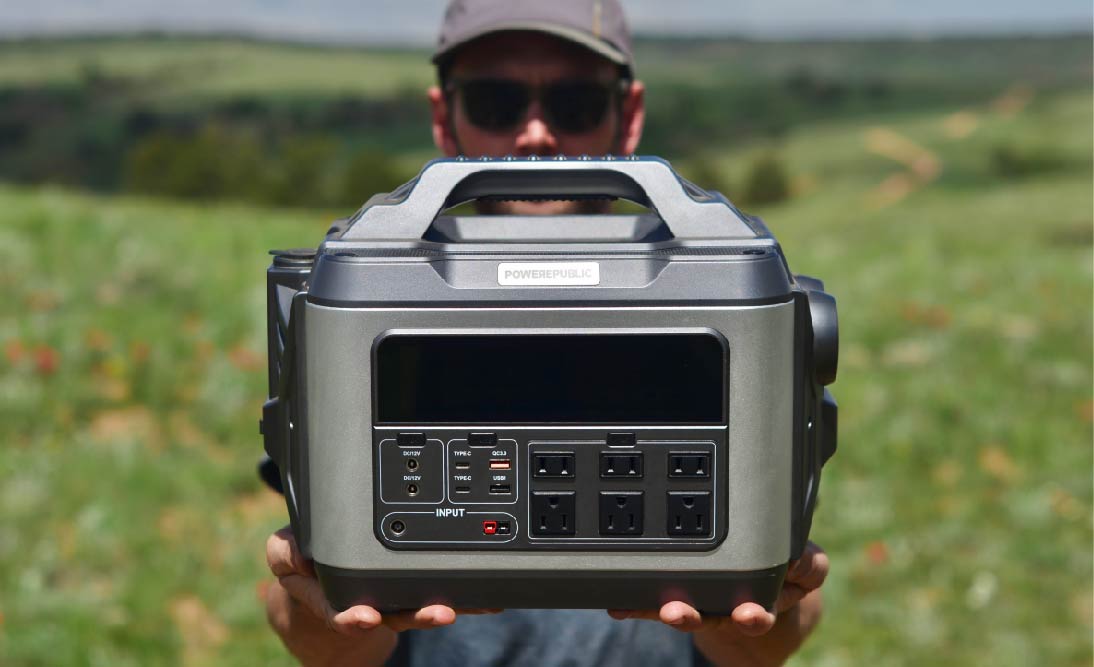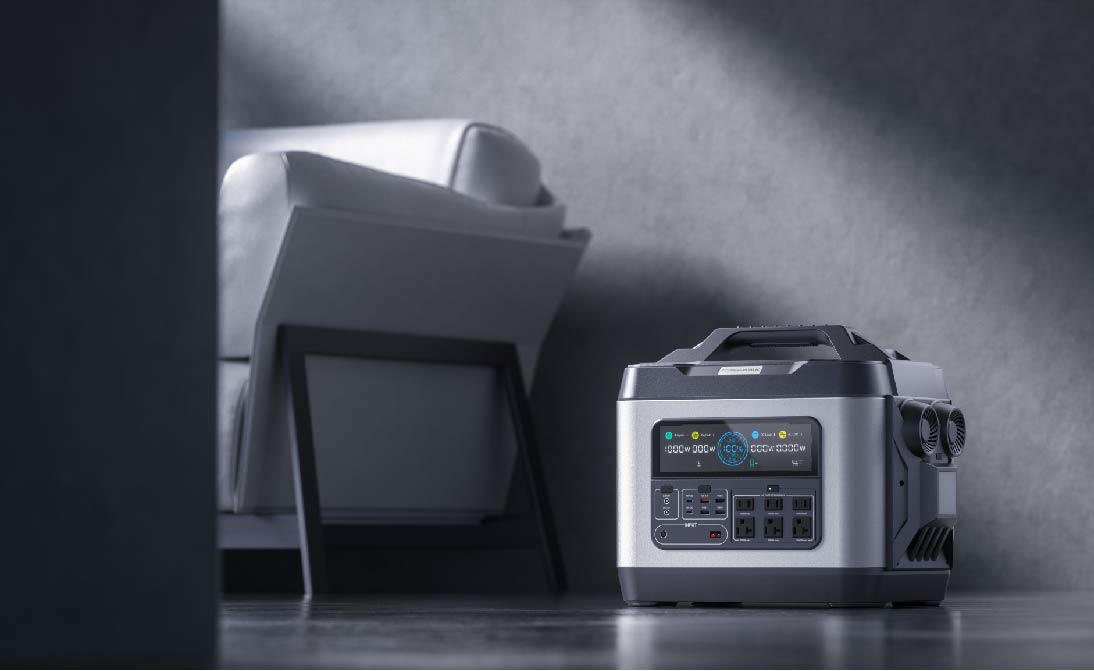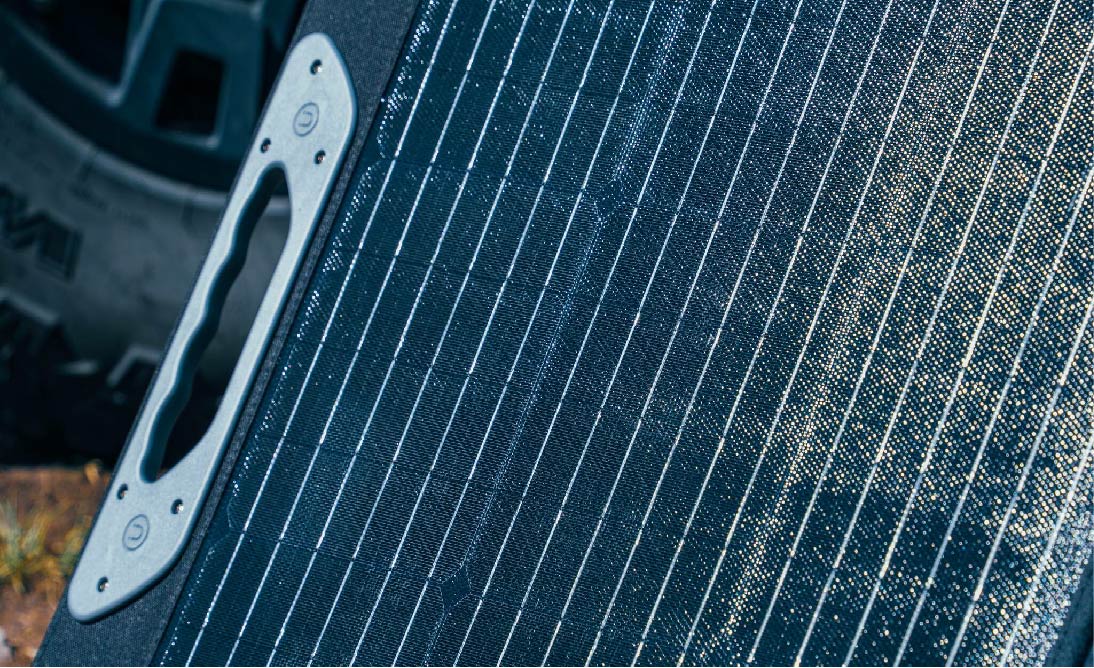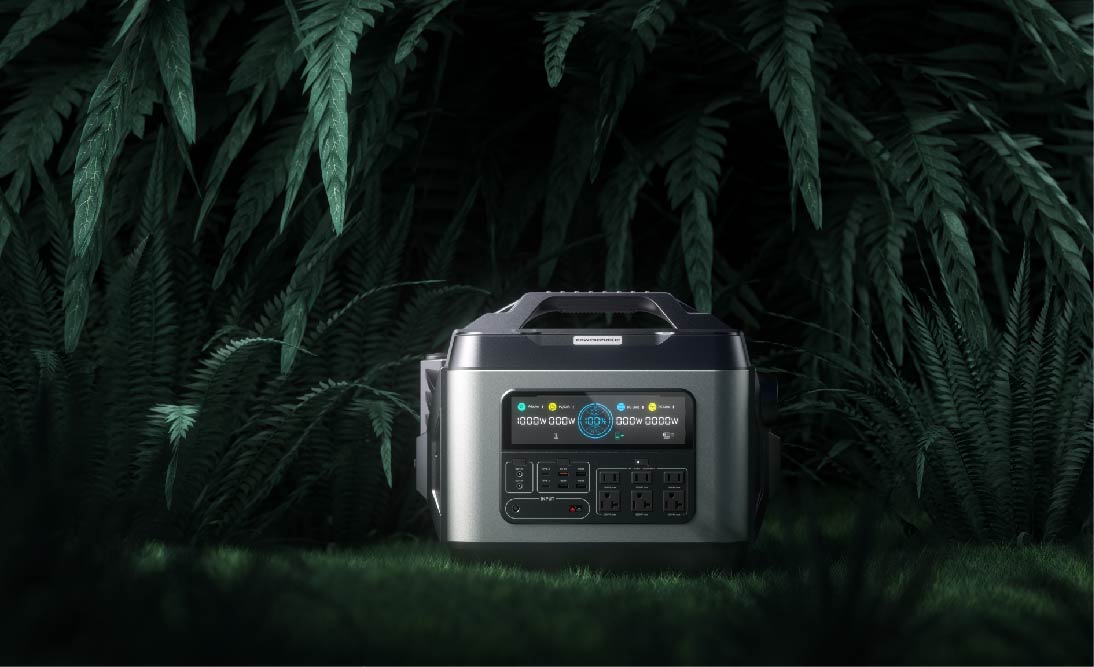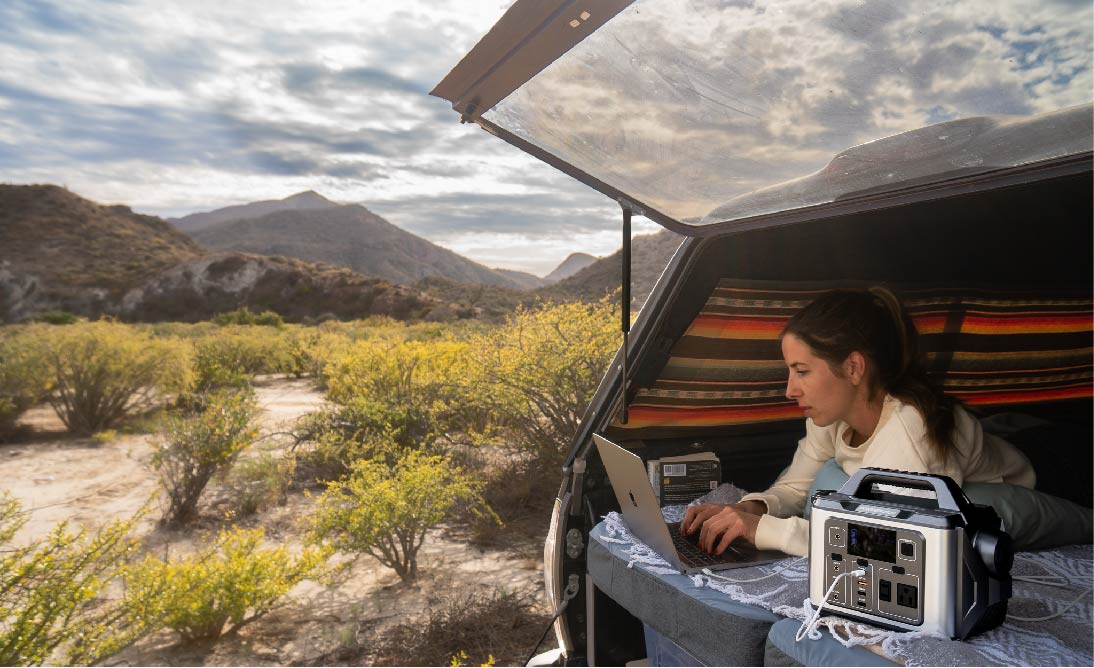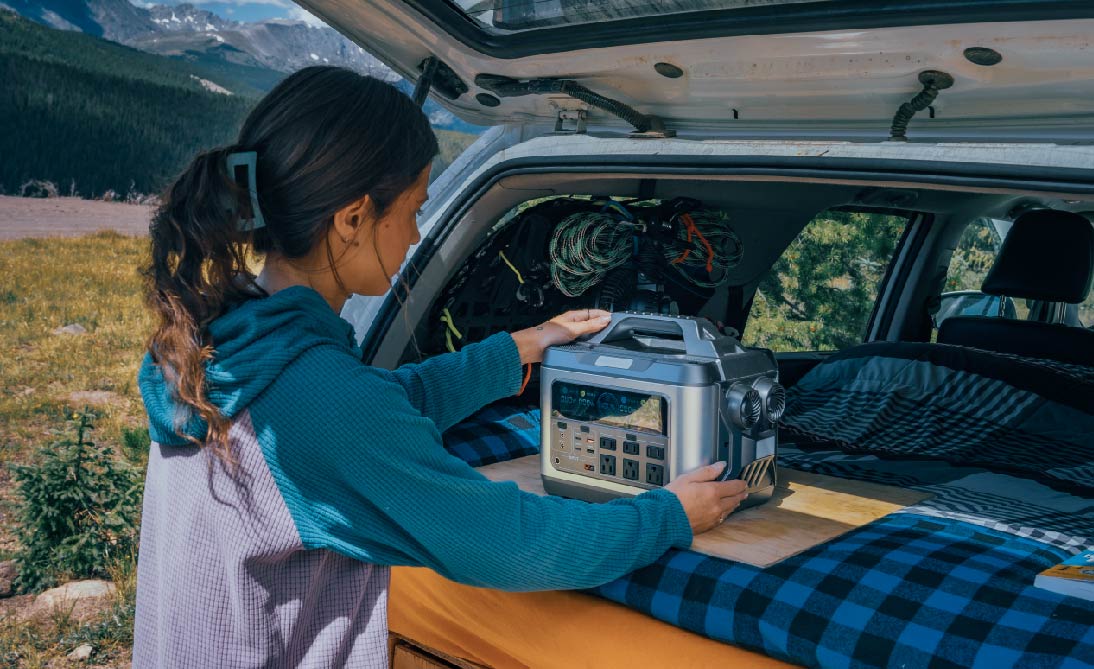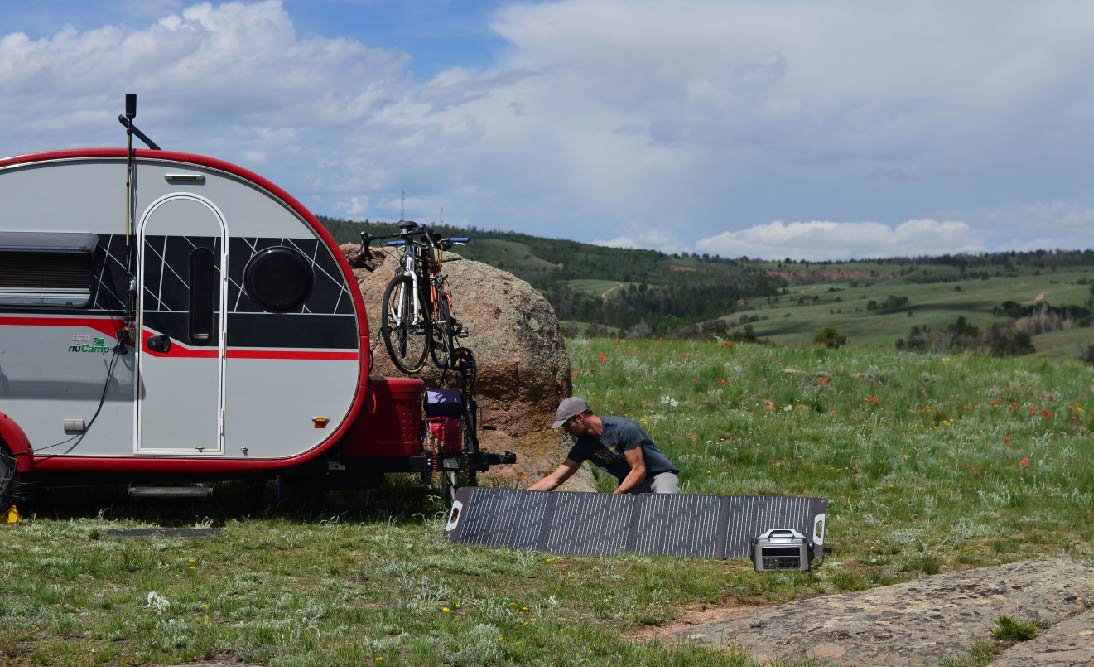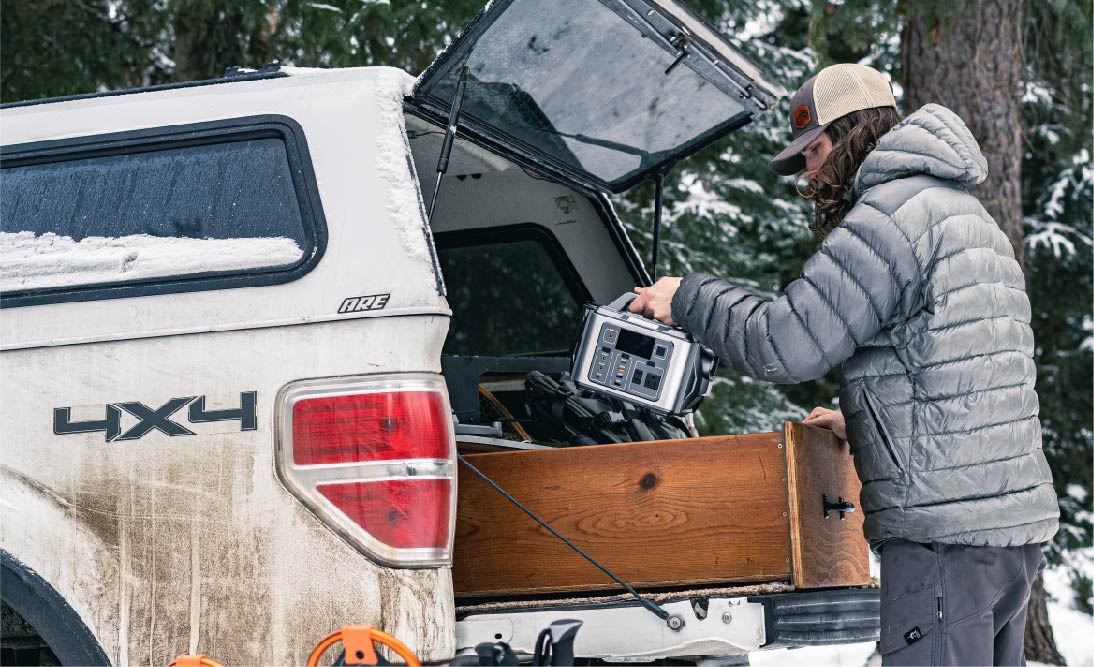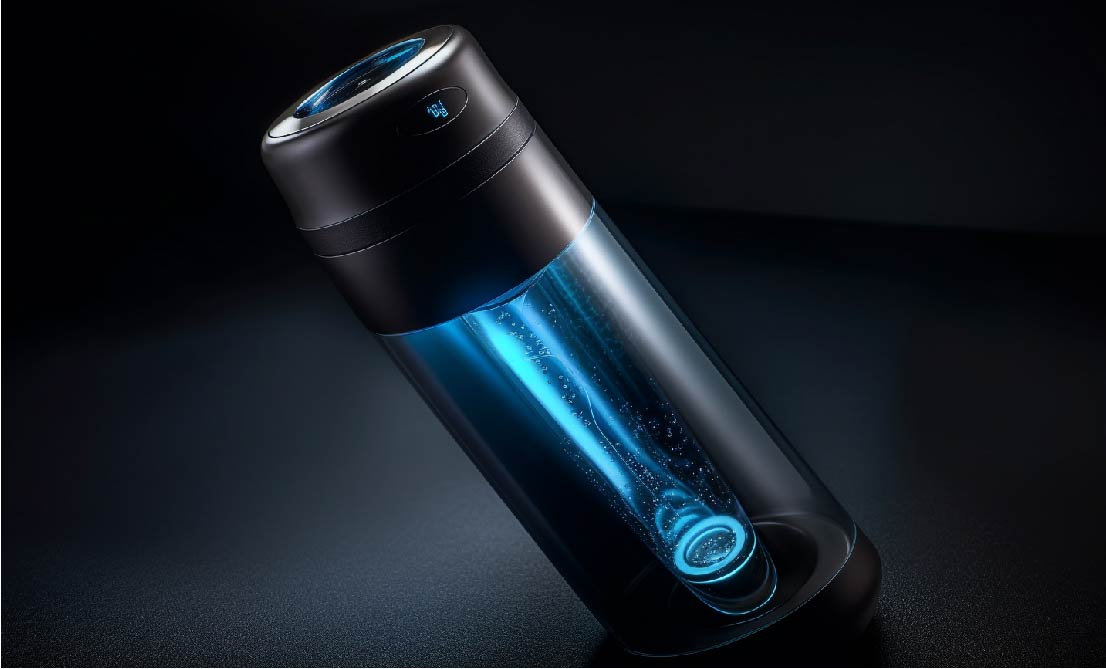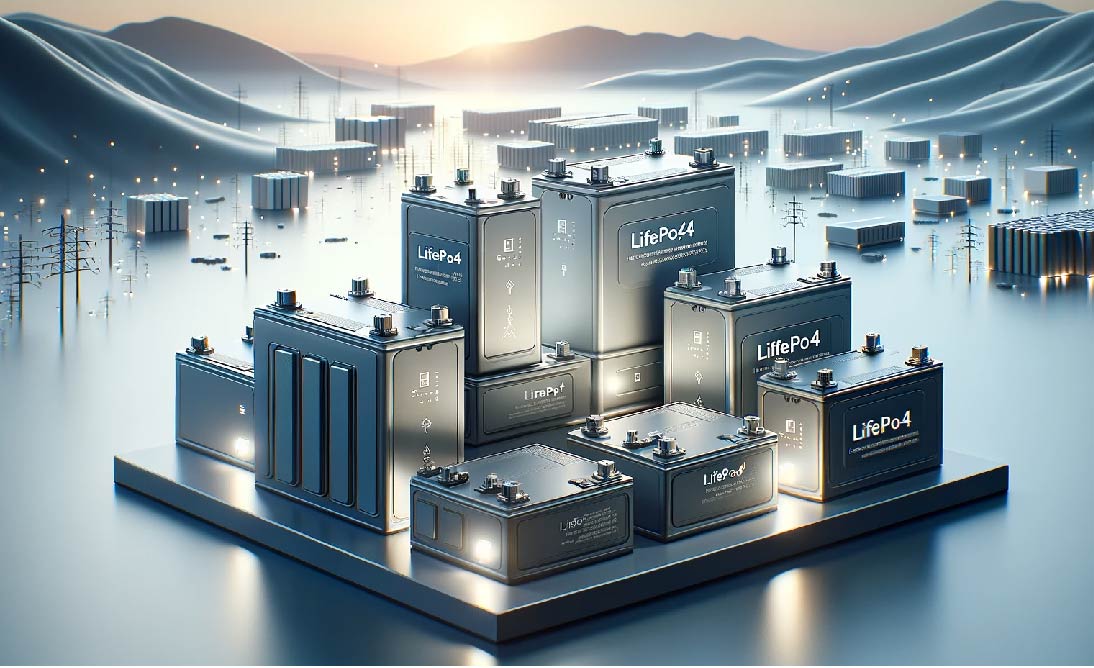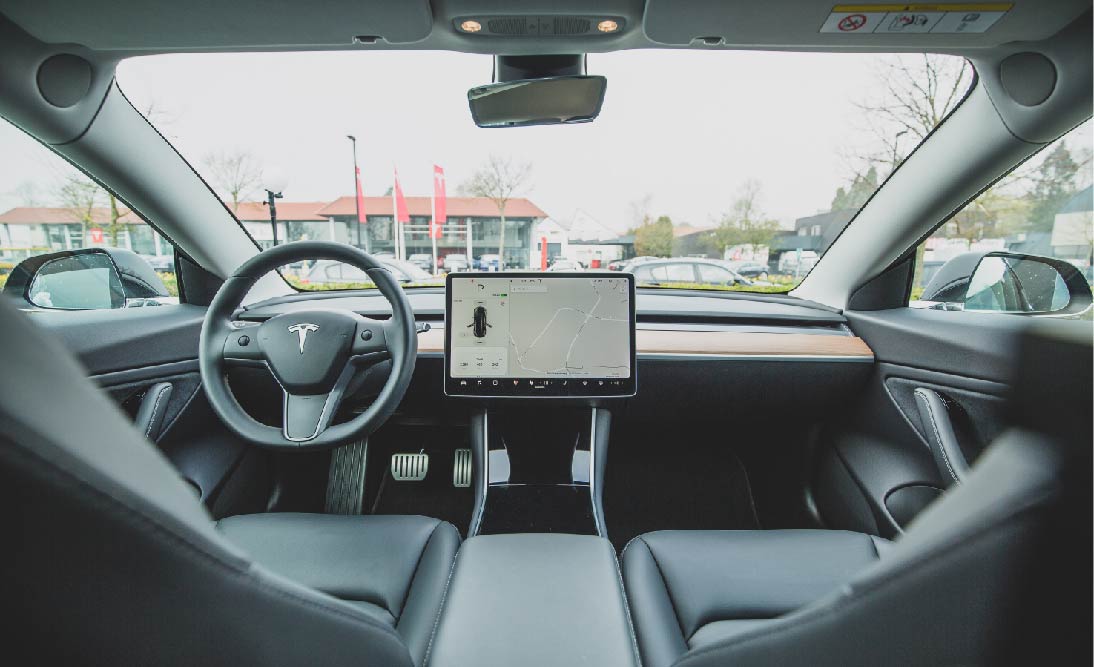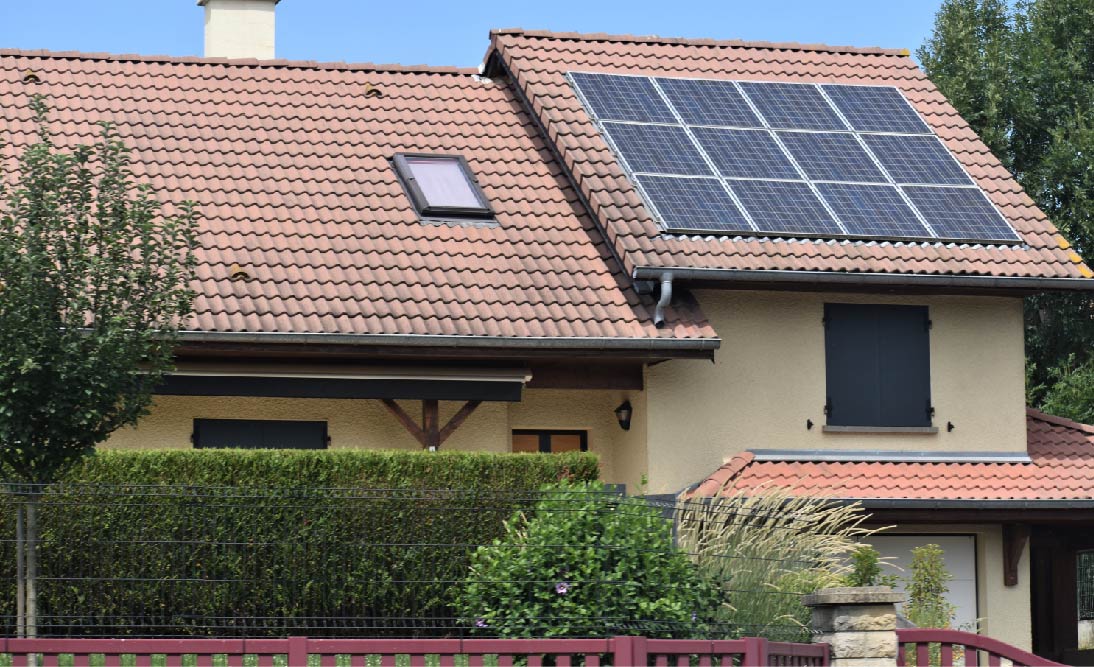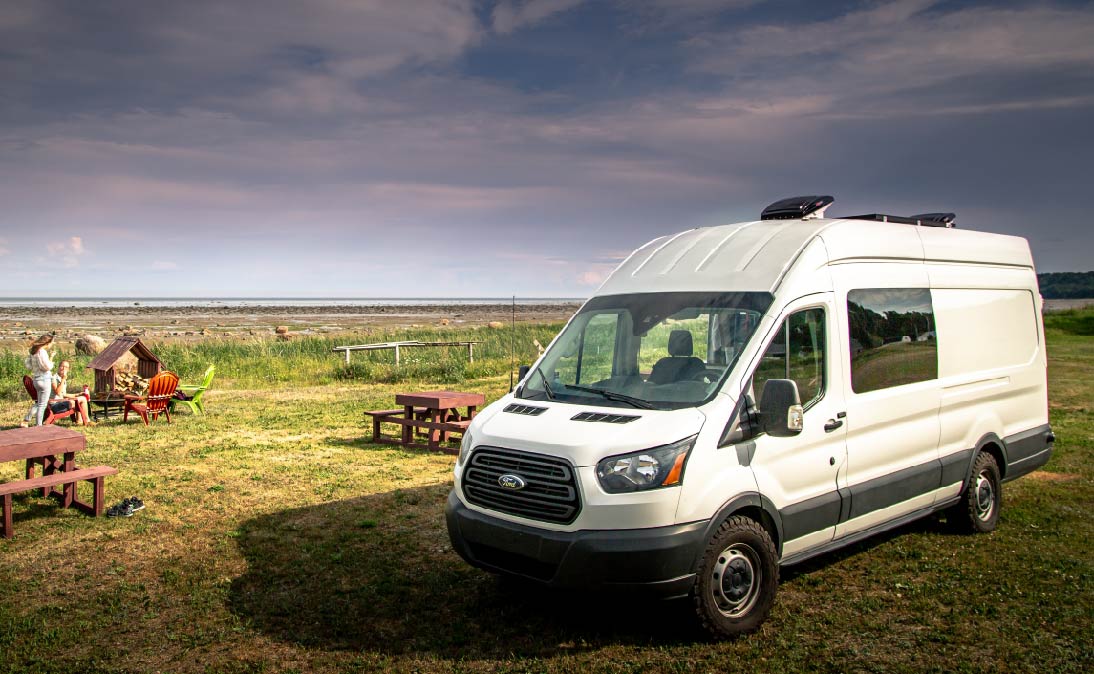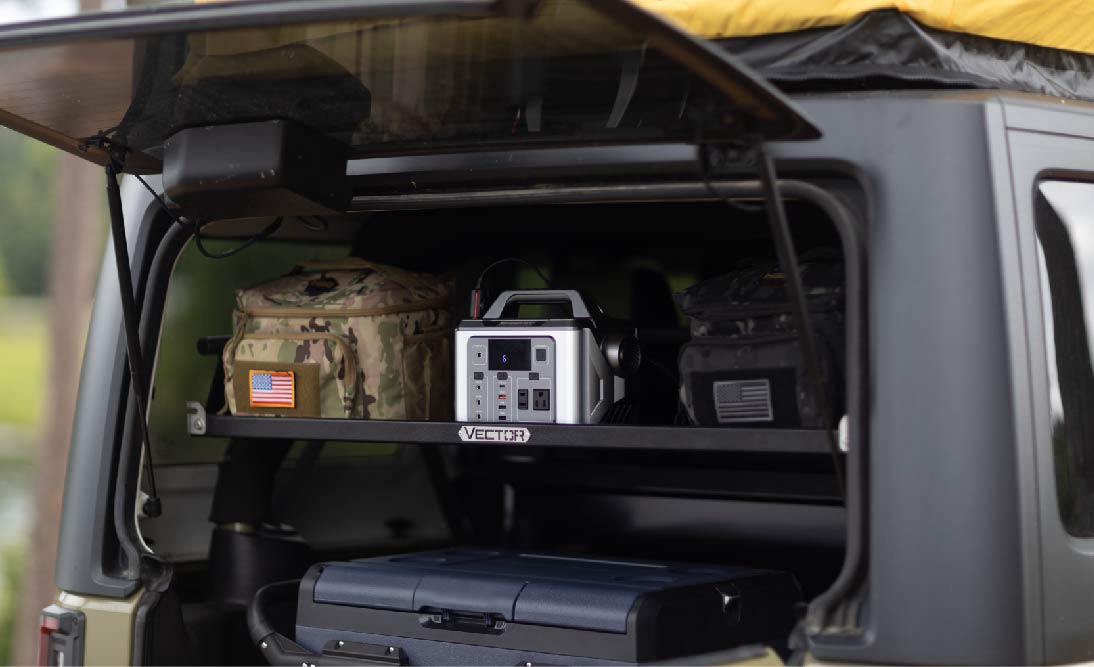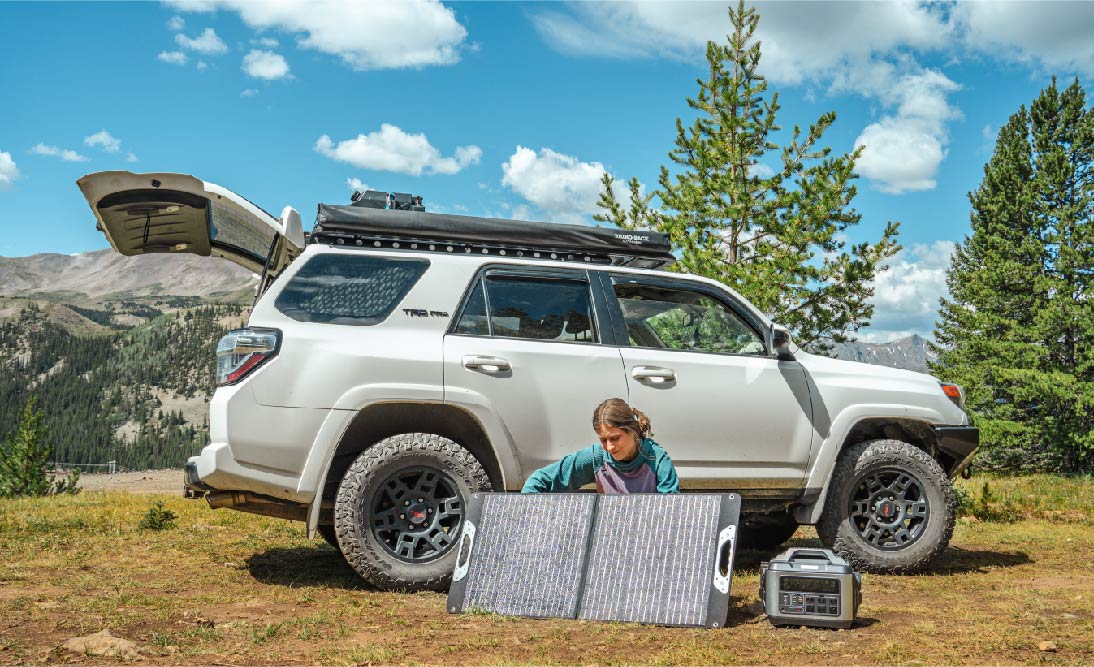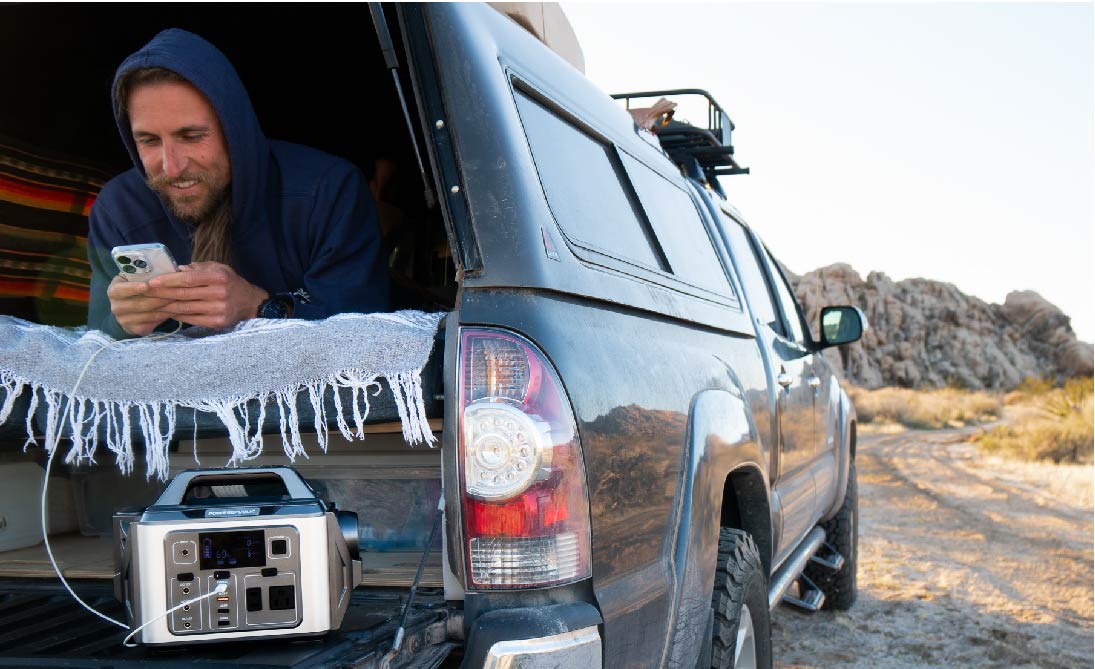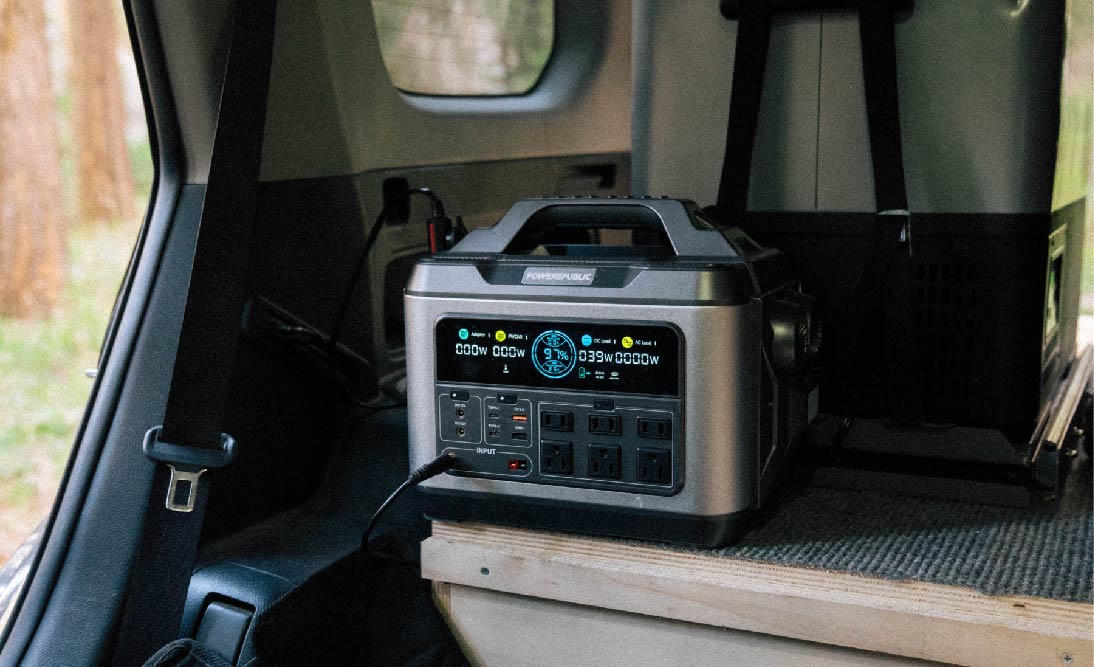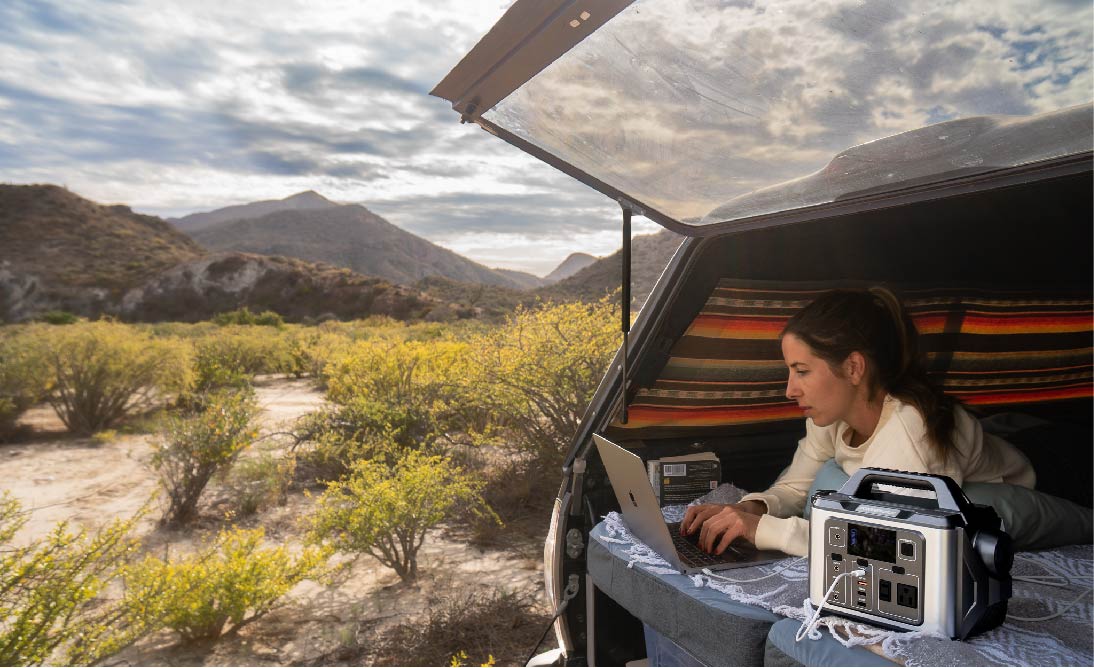Table of Contents:
-
In What Scenario Do We Need a Whole House Battery Without Solar?
-
How To Choose the Best Whole House Battery Without Solar During Short-term Power Outages?
-
Can a Portable Power Station Function Like a Whole House Battery Without Solar?
-
Whole House Battery Without Solar for Short-term Power Outages: POWEREPUBLIC T2200 and T3000 Models
In an era where power reliability is more critical than ever, a Whole House Battery Without Solar emerges as a pivotal solution for maintaining uninterrupted electricity. This innovative system ensures that your home remains powered during short-term outages without relying on solar panels. Whether due to weather-related disruptions or grid failures, the need for a Whole House Battery Without Solar is undeniable, offering peace of mind and continuous power. Choosing the best system involves understanding your energy requirements and evaluating the latest models, such as the POWEREPUBLIC T2200 and T3000, designed to cater to diverse household needs.
Additionally, portable power stations have sparked interest for their potential to mimic the Whole House Battery Without Solar's functionality, providing a flexible alternative for emergency power. This guide dives deep into the essence of Whole House Battery Without Solar, exploring its significance, application scenarios, and selection process to ensure your home stays lit when the grid goes dark.
What is a Whole House Battery Without Solar?
A Whole House Battery Without Solar is a comprehensive energy storage solution designed to provide electricity to an entire home during grid outages, without relying on solar panel systems for power generation. This system plays a crucial role in modern energy management, ensuring households maintain power during unexpected or scheduled grid failures.
It is essentially a high-capacity battery system that stores electricity from the grid during normal operations. When the grid power is unavailable, the system automatically kicks in, supplying electricity to the home's essential circuits or the entire house, depending on the system's capacity and the homeowner's setup.

Main Components and Function
The primary components of a Whole House Battery Without Solar include the battery module(s), an inverter, and a control system. The battery module stores electrical energy, the inverter converts stored DC power into AC power usable by household appliances, and the control system manages the flow of electricity, ensuring a seamless transition during power outages.
Type
These battery systems come in various types, primarily distinguished by their battery technology. The most common include lithium-ion and lead-acid batteries, with lithium-ion being preferred for its longer lifespan, higher energy density, and faster charging rates.
Price Range
The cost of a Whole House Battery Without Solar can vary widely based on capacity, technology, and brand. Prices generally range from $5,000 to over $30,000 for high-end models that offer extensive power storage and sophisticated management features.
Investing in a Whole House Battery Without Solar provides a reliable backup power solution that ensures your home remains functional and comfortable during power outages. The choice of system depends on your specific energy requirements, budget, and preference for certain battery technologies, highlighting the importance of thorough research and comparison to find the best fit for your home.
In What Scenario Do We Need a Whole House Battery Without Solar?
In today's world, the necessity for a Whole House Battery Without Solar becomes increasingly apparent. This system is not just a luxury but a critical component for ensuring that homes remain powered during various scenarios where the grid cannot be relied upon.
Here are specific scenarios, with examples, where the need for a Whole House Battery Without Solar is underscored:
Scenario 1: Natural Disaster-Induced Outages
Imagine a scenario where a severe hurricane hits, causing widespread power outages. A Whole House Battery Without Solar can provide uninterrupted power for essential services such as refrigeration, lighting, and HVAC systems. For example, if a household consumes an average of 2 kWh for essential appliances during an outage, and the outage lasts for 48 hours, a system with a capacity of at least 4 kWh would be necessary to sustain these basic needs until grid power is restored.
Scenario 2: Avoiding Peak Time Charges
In areas where electricity rates fluctuate based on demand, using a Whole House Battery Without Solar to store power during off-peak hours and then utilizing it during peak hours can lead to significant savings. If the peak rate is twice as high as the off-peak rate, and a household typically consumes 30 kWh during peak times each week, shifting to battery power could save the cost difference for that 30 kWh every week.
Scenario 3: Supporting Critical Medical Equipment
For homes with residents requiring powered medical devices, reliability is non-negotiable. A Whole House Battery Without Solar ensures that devices such as oxygen concentrators or home dialysis machines continue operating without interruption. Calculating the power needed for such equipment, let's say an oxygen concentrator uses 350 watts per hour, running 24 hours would require 8.4 kWh per day. In this case, a battery system with the capacity to provide this amount of energy, plus a margin for other essentials, is crucial.
Scenario 4: Frequent Grid Instability
In regions experiencing frequent, unpredictable power outages due to an aging infrastructure, a Whole House Battery Without Solar can provide a stable power supply. For a household that uses an average of 30 kWh per day, having a battery system with a capacity to cover a significant portion of this, if not all, for at least one or two days, can make the difference between comfort and hardship during unexpected blackouts.

In each of these scenarios, the Whole House Battery Without Solar serves as a backbone for energy reliability, offering a buffer against the uncertainties of grid dependence. Whether it’s for emergency preparedness, cost savings, medical necessity, or coping with an unreliable grid, investing in a Whole House Battery Without Solar is a prudent decision for ensuring that your home remains powered in virtually any situation. This illustrates the versatility and essential nature of Whole House Battery Without Solar systems in modern energy management strategies.
Why Do We Need a Whole House Battery Without Solar?
The need for a Whole House Battery Without Solar in today's energy landscape is driven by several compelling reasons, each highlighting the system's role in enhancing home energy security, efficiency, and independence.
Here's a closer look at why investing in such a system is not just beneficial but increasingly becoming a necessity:
Benefits of a Whole House Battery Without Solar
1. Uninterrupted Power Supply During Outages
The primary reason for a Whole House Battery Without Solar is to ensure that homes have a continuous power supply during grid outages, which can be caused by natural disasters, infrastructure failures, or routine maintenance. For instance, in the event of a 24-hour blackout, a home requiring 30 kWh/day for essential functions would need a battery system with at least that capacity to maintain normalcy without grid power.
2. Energy Cost Savings
Another significant advantage is the potential for energy cost savings, particularly in areas with variable electricity pricing. By storing energy during low-rate periods and using it during peak pricing times, a Whole House Battery Without Solar can lead to considerable savings. For example, if electricity costs $0.10/kWh during off-peak hours and $0.30/kWh during peak hours, using stored energy to offset 10 kWh of daily peak usage translates to $2/day in savings or roughly $730 annually.
3. Support for Critical Systems
Homes with critical medical equipment or systems that require constant power, like sump pumps or heating/cooling systems, cannot afford interruptions. A Whole House Battery Without Solar ensures these essential systems remain operational. For example, a CPAP machine using 70 watts for 8 hours overnight would require 0.56 kWh of power. In a multi-day outage, ensuring a battery capacity that supports this alongside other essentials is critical.
4. Enhanced Energy Independence
By reducing reliance on the grid, a Whole House Battery Without Solar provides homeowners with greater energy independence. This is particularly valuable in areas prone to frequent power outages or where grid stability is a concern. For a household that uses an average of 30 kWh/day, having a system that can cover this demand for at least one or two days can significantly enhance self-sufficiency.
5. Environmental Impact
While not directly related to savings or reliability, using a Whole House Battery Without Solar also aligns with environmental sustainability goals by enabling more efficient use of energy and potentially reducing the need for high-emission backup generators.

Downside Of a Whole House Battery Without Solar
While a Whole House Battery Without Solar offers numerous benefits, it's also important to consider the potential downsides before investing. Here are some of the challenges and limitations associated with these systems:
1. Initial Cost
One of the most significant barriers to adopting a Whole House Battery Without Solar is the initial investment required. High-quality systems can be expensive, with costs ranging from $5,000 to over $30,000, depending on capacity, technology, and brand. This upfront cost may be prohibitive for some households, despite the long-term savings and benefits.
2. Maintenance and Lifespan
Battery systems, depending on their technology (e.g., lithium-ion vs. lead-acid), have varying lifespans and maintenance requirements. While lithium-ion batteries offer a longer lifespan and lower maintenance, they are also more expensive upfront. Batteries will eventually need to be replaced, adding to the long-term cost of ownership.
3. Capacity Limitations
The capacity of a Whole House Battery Without a Solar system determines how long it can power a home during an outage. Calculating the right size for your home's needs is crucial, but even well-sized systems may not support extended outages beyond their capacity. This means households might still experience power interruptions during prolonged grid failures.
4. Space Requirements
Whole house battery systems can be bulky and require a dedicated space for installation. For homes with limited space, finding a suitable location for the system that is both accessible for maintenance and safe can be a challenge.
5. Technical Complexity
The installation and integration of a Whole House Battery Without a Solar system into a home's existing electrical infrastructure can be complex. It typically requires professional installation and a thorough understanding of the home’s energy needs, which can add to the overall cost and preparation time.
6. Dependence on Grid Electricity
Since these systems are charged from the grid (as opposed to solar or other renewable sources), they are still dependent on the availability of grid electricity for charging. During extended blackouts or in scenarios where the grid is down for several days, the system's ability to recharge becomes limited.
7. Environmental Impact
While batteries provide a cleaner alternative to diesel generators, they still have an environmental footprint. The production and disposal of batteries involve the use of heavy metals and other materials that can be harmful to the environment if not properly recycled.
In summary, while a Whole House Battery Without Solar can significantly enhance a home's energy resilience and independence, it's important to weigh these advantages against the potential downsides. Considering factors like cost, maintenance, capacity, and environmental impact will help homeowners make an informed decision that aligns with their needs and values.
How To Choose the Best Whole House Battery Without Solar During Short-term Power Outages?
Choosing the best Whole House Battery Without Solar during short-term power outages involves a careful evaluation of your home's energy needs, the battery's capacity, its technology, and how these factors align with your budget and preferences.

Here’s a guide to making an informed decision, ensuring your home remains powered during those critical moments when the grid is down.
Assess Your Energy Requirements
First, calculate your home's essential energy needs. For short-term outages, consider what you need to keep running: refrigeration, basic lighting, a few outlets for charging devices, and perhaps a medical device or your home's HVAC system. An average refrigerator uses about 1-2 kWh per day, while LED lights and charging for small electronics might add up to another 1 kWh. If you're including an HVAC system, that could significantly increase your requirements, possibly adding 10-25 kWh per day depending on the system and usage.
Evaluate Battery Capacity and Efficiency
Once you've determined your energy requirements, look for a Whole House Battery Without Solar with enough capacity to meet your needs. Battery capacity is measured in kilowatt-hours (kWh). If your essential energy use during an outage is 3 kWh per day, and you're preparing for a 2-day outage, you'll need a system with at least 6 kWh of usable capacity. Remember, battery efficiency plays a role; not all stored energy is usable due to conversion losses. Lithium-ion batteries, for instance, are more efficient (around 90-95%) compared to lead-acid batteries (about 80-85%).
Consider Battery Technology
The main technologies for a Whole House Battery Without Solar are lithium-ion and lead-acid. Lithium-ion batteries are more expensive but offer a longer lifespan, higher energy density, and greater efficiency, making them a preferable choice for many homeowners. Lead-acid batteries, while cheaper, have a shorter lifespan and lower efficiency. Given the example above, a lithium-ion battery would provide a more reliable and long-term solution for short-term power outages.
Check Compatibility and Scalability
Ensure the Whole House Battery Without Solar is compatible with your home's existing electrical system and has the potential for scalability. Some systems allow for additional battery modules to be added later, providing a way to increase capacity if your energy needs grow or if you decide to include more of your home’s circuits during an outage.
Budget and Long-term Costs
With prices ranging from $5,000 to over $30,000, the cost of a Whole House Battery Without Solar can vary widely. While it's tempting to go for a cheaper option, consider the long-term costs, including maintenance, replacement, and efficiency. A more expensive lithium-ion system might offer better value over time due to its longer lifespan and higher efficiency.
Example Calculation
Let’s say you've calculated your essential energy needs to be 4 kWh per day during a short-term outage. Opting for a lithium-ion Whole House Battery Without Solar with a capacity of 8 kWh to cover two days, considering a 90% efficiency, means you have 7.2 kWh of usable energy. This should be adequate for most essential needs, including some overhead for inefficiencies or additional power usage.
In short, selecting the best Whole House Battery Without Solar for short-term power outages requires understanding your energy needs, considering the right technology and capacity, and balancing initial costs with long-term value. By carefully evaluating these factors, you can ensure that your home remains powered and comfortable, even when the grid is down, providing peace of mind and security for your family.
Can a Portable Power Station Function Like a Whole House Battery Without Solar?
Yes or No?
Yes, a portable power station can function similarly to a Whole House Battery Without Solar under certain conditions.
Why?
Portable power stations are essentially large batteries that store electricity to be used when needed, similar to whole-house batteries without Solar systems. They can power several devices and small appliances, making them a viable option for emergency power during short-term outages. However, their capacity and output limitations mean they cannot always power an entire house or heavy-duty appliances for extended periods like a dedicated whole-house system can.

Factors to Consider While Doing So:
-
Capacity and Power Output: Portable power stations have limited capacity (measured in watt-hours, Wh) and output (measured in watts, W), determining how many devices you can power and for how long. For example, a 1,000Wh power station might power a fridge (200W) for about 4 hours, considering efficiency losses.
-
Energy Requirements: Assess the energy needs of essential devices and appliances you plan to power. A fridge, a few lights, and charging for devices have much lower requirements than an entire home's HVAC system.
-
Rechargeability: Consider how you will recharge the power station, especially during extended outages. Options include the grid (when available), car chargers, or even solar panels, despite the focus being without solar integration.
-
Portability: One of the main advantages is the ease of moving the unit where needed, unlike a fixed Whole House Battery Without a Solar system.
Pros and Cons:
Pros:
-
Flexibility: Can be used in various settings, including outdoors, camping, or in any room within a home.
-
Ease of Use: Generally plug-and-play, with no complex installation required.
-
Immediate Solution: Offers a quick fix for power needs without the need for professional installation.
Cons:
-
Limited Capacity: May not power large appliances or an entire home's needs for as long as a Whole House Battery Without Solar would.
-
Recharging Challenges: During prolonged outages, recharging could become problematic, especially if relying solely on the grid.
-
Cost Efficiency: While portable power stations are less expensive upfront, their price per watt-hour can be higher than a larger, whole-house system, making them less cost-effective for powering many devices over time.
Example Calculation:
If you need to power a fridge (200W), a few LED lights (40W total), and charge mobile devices (60W total), your total power needed is 300W. A 1,000Wh portable power station could technically power these for approximately 3 hours (1,000Wh / 300W), considering a 100% efficiency, which in real-life scenarios, would be less due to efficiency losses.
So, while a portable power station can function in a capacity similar to a Whole House Battery Without Solar for specific, limited applications, it's crucial to understand its limitations and suitability based on your energy needs. They offer a flexible, though less comprehensive, alternative to whole-house systems, making them an excellent option for targeted use during short-term power outages.
Whole House Battery Without Solar For Short-term Power Outages: POWEREPUBLIC T2200 and T3000 Models
Now we know that a portable power station can function in a capacity similar to a Whole House Battery Without Solar for specific, limited applications. They offer a flexible, though less comprehensive, alternative to whole-house systems, making them an excellent option for targeted use during short-term power outages.

Thus, for those of you searching for an option like that, take a look at the POWEREPUBLIC T2200 and T3000 portable power stations. Both are designed for short-term power outages for van life, RV life, off-grid living, and so forth, making them two of the best Whole House Battery Without Solar options on the market. To better compare and understand the functionality and differences between the two, please refer to the table below:
|
Feature/Model |
||
|
Capacity |
2240Wh/100,000mAh |
3200Wh/125,000mAh |
|
Running Power |
2200W |
3000W |
|
Peak Power |
4500W |
6000W |
|
Battery Type |
LiFePO4(3000+ cycles) |
LiFePO4(3000+ cycles) |
|
Number of Output Ports |
15 (6*AC, 3*USB, 1*QC3.0, 2*Type C, 2*DC/12V, 1*Car Port ) |
15 (6*AC, 3*USB, 1*QC3.0, 2*Type C, 2*DC/12V, 1*Car Port ) |
|
Charging Methods |
AC Adapter, Solar Panel, Car Charger |
AC Adapter, Solar Panel, Car Charger |
|
Additional Features |
LDC Screen, Turbine Engine and Aircraft Wing Design for Durability, Aluminum-alloy Body, LED Light on the side |
LDC Screen, Turbine Engine and Aircraft Wing Design for Durability, Aluminum-alloy Body, LED Light on the side |
|
Weight |
64Ibs/30Kg |
88Ibs/40Kg |
|
Dimensions |
18.3*11.8*12.2 inch |
18.3*11.8*14.5 inch |
|
Est.Duration(h) |
Est.Duration(h)=Capacity(Wh) * 0.85 / The power of the item(W) |
|
|
9.5 hours |
13.5 hours |
|
|
Desktop Computer (250W) |
7.5 hours |
10.5 hours |
|
6 to 12 hours |
9 to 18 hours |
|
|
Refrigerator (150W-400W) |
4.5 to 12 hours |
6.5 to 18 hours |
|
Microwave (1000W) |
2 hours |
2.5 hours |
|
Washing Machine (1200W) |
1.5 hours |
2.3 hours |
|
Portable Heater (1500W) |
1.3 hours |
1.8 hours |
|
Air Conditioner (2000W-3000W) |
2000W: 1 hour 3000W: Not Applicable |
1 to 1.3 hours |
Note That:
-
When utilizing a portable power station, it's crucial to understand that the estimated runtimes are based on operating a single device at a time with a fully charged battery. Additionally, it's important to note that power consumption may vary across different brands.
-
Always verify the continuous and peak power requirements of your appliances in comparison to the capacity of the power station. Ensure that the combined power demand, encompassing both the running and starting power, does not surpass the capacity of your power station.
-
POWEREPUBLIC is rated 4.5 on Trustpilot.
Final Thoughts
In today's energy landscape, where reliability and sustainability are paramount, the Whole House Battery Backup Without Solar presents itself as an indispensable solution. The POWEREPUBLIC T2200 and T3000 models exemplify the pinnacle of this technology, offering robust, reliable power solutions for short-term outages without the need for solar integration. These models serve as ideal alternatives for those seeking emergency power for van life, RV life, off-grid living, and more, positioning them as two of the top Whole House Battery backups without Solar options available on the market.
Investing in a Whole House Battery Backup Without Solar like the POWEREPUBLIC models ensures that your home remains powered during critical times, offering peace of mind and energy independence. These systems are not just about keeping the lights on; they're about ensuring a seamless lifestyle continuity amidst the vagaries of grid reliability. As such, the Whole House Battery Backup Without Solar becomes not just an option, but a necessity for modern living, championing both efficiency and environmental sustainability.
Discover more about POWEREPUBLIC Portable Power Stations!
